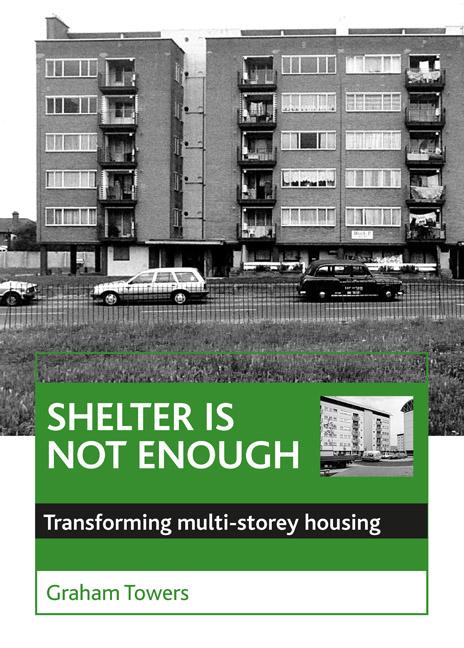Book contents
- Frontmatter
- Contents
- List of figures and tables
- Dedication
- Preface
- Foreword
- one Introduction
- two Forming the multi-storey legacy
- three Politics, economics and housing form
- four Social stigma and community action
- five Redeeming the estates
- six Facets of regeneration
- seven Building a model framework
- eight Prospects for transformation
- nine Ending the estate syndrome
- ten On broader horizons ...
- Bibliography
- Appendix: Case study research
- Index
three - Politics, economics and housing form
Published online by Cambridge University Press: 05 July 2022
- Frontmatter
- Contents
- List of figures and tables
- Dedication
- Preface
- Foreword
- one Introduction
- two Forming the multi-storey legacy
- three Politics, economics and housing form
- four Social stigma and community action
- five Redeeming the estates
- six Facets of regeneration
- seven Building a model framework
- eight Prospects for transformation
- nine Ending the estate syndrome
- ten On broader horizons ...
- Bibliography
- Appendix: Case study research
- Index
Summary
The history of Britain's urban housing problems explains the location of the multi-storey legacy in the inner cities. It also explains the overall forms that it took – the walk-up tenement blocks of the inter-war period necessitated by the requirements of slum clearance procedure; the tall blocks of the 1950s and the 1960s, a response to planing policy but shaped by the subsidy system; and the high-density low-rise estates of the late 1960s and early 1970s which grew out of review and revisions to policy and funding. What it does not explain, however, is the poor quality of much of the multi-storey housing produced in the boom period and the physical shortcomings which lie at the root of many of the problems of inner-city estates.
It is clear that, from the beginning, there was a conflict over quality and standards in multi-storey housing. By the start of the housing boom, in the early 1950s, this conflict had resolved into two distinct traditions. On the one hand was the ‘utilitarian’ tradition. This grew from the concern over housing and health and sought to ensure that low-income families were provided with housing that was sound, clean and dry but not embellished with visual quality nor given good facilities or public amenities. It was to be provided as cheaply as reasonably possible. On the other hand was the ‘idealistic’ tradition. This promoted the idea that flat living was a desirable end in itself and that people should be given the dignity of high quality homes. The concentration of people in high-density buildings created both the opportunity and the need to provide generous communal open space and facilities for recreation and childcare. The idealistic approach recognised that multi-storey housing, done well, was not a cheap option.
During the years of high housing output, when the bulk of the multi-storey legacy was built, these traditions created a serious contradiction. Many of the policy makers, providers and designers were inspired by the idealistic tradition. The reality of funding, however, and the sheer scale of the ambitions in terms of housing numbers, meant that the priorities of the utilitarian tradition largely dominated. Although the conflict over the quality of the flats themselves was largely resolved in favour of high space standards this created pressure for economies elsewhere. The nature and the quality of the access systems suffered, as did the quality and standards of construction.
- Type
- Chapter
- Information
- Shelter Is Not EnoughTransforming Multi-Storey Housing, pp. 43 - 64Publisher: Bristol University PressPrint publication year: 2000



